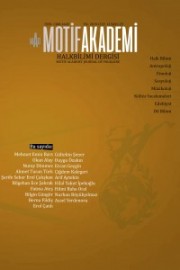ALTERNATİF İRAN FİLMLERİ, ORYANTALİZM VE İKİ BACAKLI AT
ALTERNATIVE IRANIAN FILMS, ORIENTIALISM AND TWO-LEGGED HORSE
Author(s): Bilgehan Ece ŞakrakSubject(s): Cultural history, Evaluation research, Film / Cinema / Cinematography
Published by: Motif Halk Oyunları Eğitim ve Öğretim Vakfı
Keywords: Iranian cinema; orientialism; self-othering; narration; representation;
Summary/Abstract: Iranian films that form alternative approaches in the face of mainstream Hollywood films have started to be known in international platforms, especially by film festivals, since approximately 1990s. The existence of the East in the face of the West undoubtedly brings with it certain concepts such as “orientalism and otherness “ in the meaning of the East about representation. In this study, firstly, the history of Iranian cinema is mentioned in order to understand how the narrative of alternative Iranian films were based on. The general narrative structure in the Iranian films attracting the attention of the West in the 1990’s international film festivals are evaluated with examples of Where is My Friend’s House (1987), Children of Paradise (1997), Time of Drunken Horses (2000). The aim of the study is determining of transformation of narrative in the alternative Iranian films in approximately twenty years. At this point, award-winning film in international film festivals The Two-Legged Horse (2008), by Iranian director Samira Makhmalbaf is analyzed according to Edward Said’s views on orientialism, and evaluated in the context of “self-othering” of the East in front of the West.
Journal: Motif Akademi Halkbilimi Dergisi
- Issue Year: 12/2019
- Issue No: 25
- Page Range: 135-151
- Page Count: 17
- Language: Turkish

